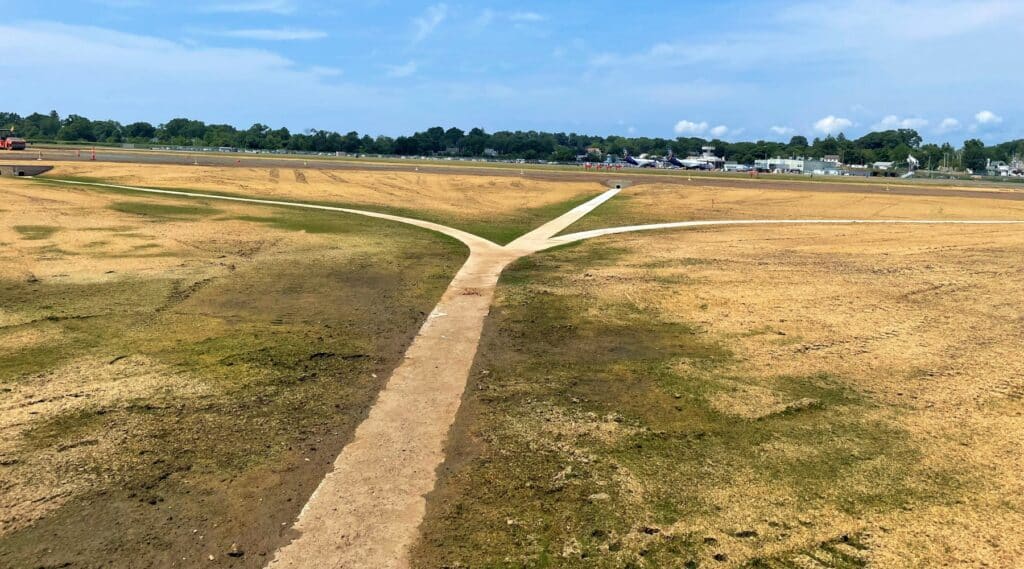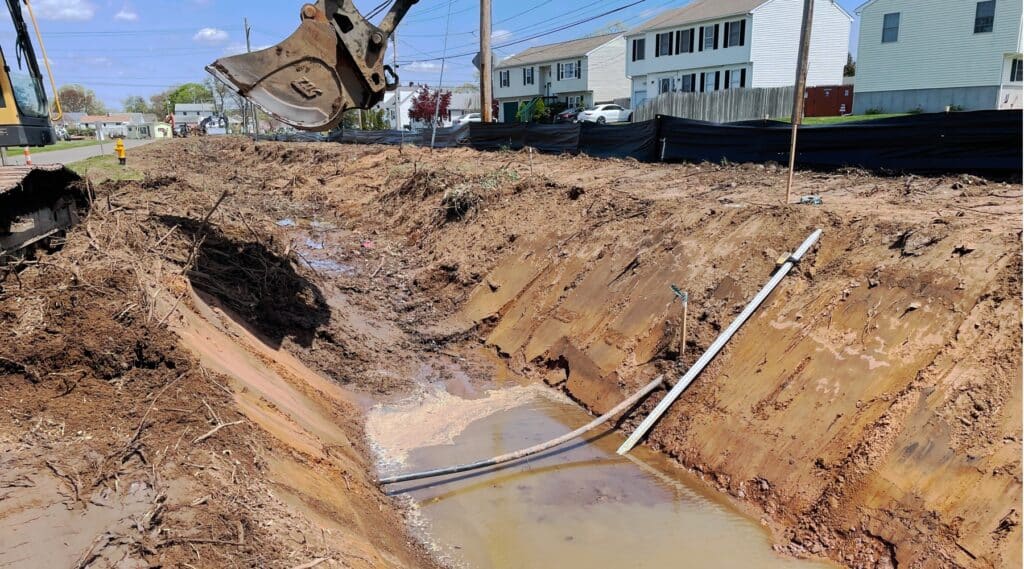What makes a project unique is sometimes the challenges that come up during permitting, design and construction. That much can be said for our ongoing project at Tweed-New Haven Airport (HVN). This project addresses both the overall efficiency and safety of HVN’s taxiway infrastructure system, specifically the lack of separation on the north end of the airfield between Taxiway A and Runway 2-20. Part of the safety improvements, aside from geometry, has also been making sure stormwater management is addressed and state-threatened species are not at risk.
Overview

The Hoyle Tanner engineering team was responsible for preparation of the permits, design and construction administration that shifted Taxiway A to meet the 400-foot runway-taxiway separation FAA requirement. The project also required revising connected portions of Taxiways C, F and G to meet new geometric design requirements of the recently issued FAA Advisory Circular.
The biggest challenges weren’t laying down 400 feet of separation or meeting new design requirements. Instead, it was designing the drainage system and protecting the on-site rare plants.
First Challenge: Drainage + Ditches
HVN is a commercial service airport at a coastal community. Our project sits about six feet above average sea level, making it home to stormwater ponding during large rain events. For this project, we didn’t use a typical closed drainage system because the project site is so close to sea level, so we didn’t have enough elevation differential to use catch basins and pipes. We designed a system of concrete-lined swales so that when it’s low tide, the stormwater flows out to the swales instead of ponding on the airport.
While it was a challenge to design drainage swales on an airport so close to sea level, the challenge continued into the construction phase as the contractor needed to account for the high ground water table. The pavement box is so near the groundwater table that it’s sometimes difficult to get compaction with a vibratory compactor, creating the same effect as quicksand. To combat this effect, we had to proof roll the subgrade and use stabilization fabric to lay the subbase on.

Next was repairing the ditch. The existing ditch on the airport that was meant to help with stormwater was no longer functioning properly. It had likely been constructed in the WWII timeframe, and it didn’t flow downhill because it was sedimented up. Trees had been growing in it and rotting, so not only was water not able to move freely, but anyone near the ditch would complain about its odor.
In dredging the ditch, our team also came across 12 different utilities that had that had not been located during the survey phase. The problem is that these utilities should have been underneath the ditch, but time and design standards have changed, causing a problem in today’s construction; we asked our Municipal Engineering team at Hoyle Tanner to evaluate and assess how to best proceed with the utilities. They were able to prepare a design that accommodated for all water and sewer utilities that service various buildings on the airfield.
Second Challenge: Vegetation
Upon surveying the airport for a different project, two state-threatened plants were identified adjacent to a previously uncategorized wetland. To allow the project to move forward, we had to quickly get a botanist into the project area and complete a survey to identify the size of the plant population and the limits on their locations. The two threatened plants were ultimately determined to be outside of the limits of the drainage improvement project’s construction zone. To our surprise, a third previously unidentified state-endangered plant was located in the construction zone.
When the plant was discovered, our choices were to transplant each plant individually to another area on the airport or do some redesign. For the protection of the plants and to keep the project schedule on track, we ultimately decided to redesign and rerouted the construction haul route so that the plants would not be disturbed.
Rare plants haven’t been the only vegetation we have had to address during this project. The ditch that had to be cleaned out was home to a number of trees that were growing in and through it. Those trees had to be removed, which unfortunately resulted in the nearby neighbors having to look directly into airport property instead of at the lush greenery locals were used to seeing. To help remedy situation and with the understanding that our solution will take time, we worked with stakeholders to plant 398 individual arborvitae trees to form a hedge along the line where the ditch was formerly located.
Whether through drainage issues or rare plants, each project presents its challenges. At Hoyle Tanner, our vision is to improve the natural and built environments with our projects, providing healthy and vibrant communities. The same is true for every airport project we work on. Do you have questions about stormwater management at your airport? Reach out to me!
*It’s Hoyle Tanner’s 50th anniversary this year! Keep an eye on our Facebook, LinkedIn, and Twitter feeds for articles and anniversary news.









